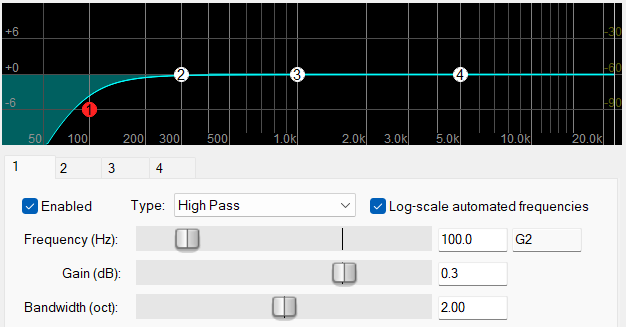So you’ve recorded your tracks and are ready to mix but you’re kind of bummed because everything always sounds so muddy and you know that whatever you try will not help much.
We’ve all been there. A lot. Yet there is one thing we know about but rarely seem to pay very much attention to:
The High Pass.
Also known as a Low Cut, it’s magic. Pure and simple.
I don’t think there is anything that can help clean up your tracks more than cutting out unwanted, low end noise. Once the muddy, rumbling, swampy, low frequencies are removed, your instruments begin to stand out on their own.
Before you gain stage and especially before you start adding gobs of compression and weird EQ settings to your tracks in an attempt to make everything pop, you need to start simple and add a high pass to every track.
Don’t worry, there will be more EQ tweaking to do; you don’t want the keyboards getting lost in the guitars after all. But a simple low cut on each track will work wonders before you do do anything else.
In a perfect world, you’d do this tweak on a mixing board before you recorded your instruments, but what bedroom musician has a board? Most home recordists just plug in and go, and there is nothing wrong with that.
Once you’ve got your tracks down, and before you do anything else, add an EQ plugin to each track and do a high pass. It doesn’t matter what EQ you use: free, paid, pro, generic, open source, third party, or included with your DAW. Just pick an EQ, add it to your track, and CUT at least:
-
-
- Guitars: everything below 100 Hz
- Bass: everything below 50 Hz
- Kick: everything below 30 Hz
- Snare (top and bottom): everything below 50 Hz
- Toms: everything below 50 Hz
- Overheads: everything below 80 Hz
- Keyboards/Synths: everything below 160 Hz, although you can play around here. The range to cut is below 80 Hz for bass synths and 160 Hz for most everything else – ymmv.
- Vocals: everything below 100 Hz.
-

The difference is noticeable and should be required if you’re preparing your tracks for export to another DAW (or another person) for mixing.
I’ve heard producers online harp about the high pass for a good long while and for some reason I tended to ignore the high pass until I was deep into a mix and wondering why everything sounded muddy.
I just finished recording the instruments for a new tune and decided to slap a high pass on every single track. The result is crisp instruments with no ambient sludge and I feel I’m already half way completed the final mix.
That’s pretty wizard.
